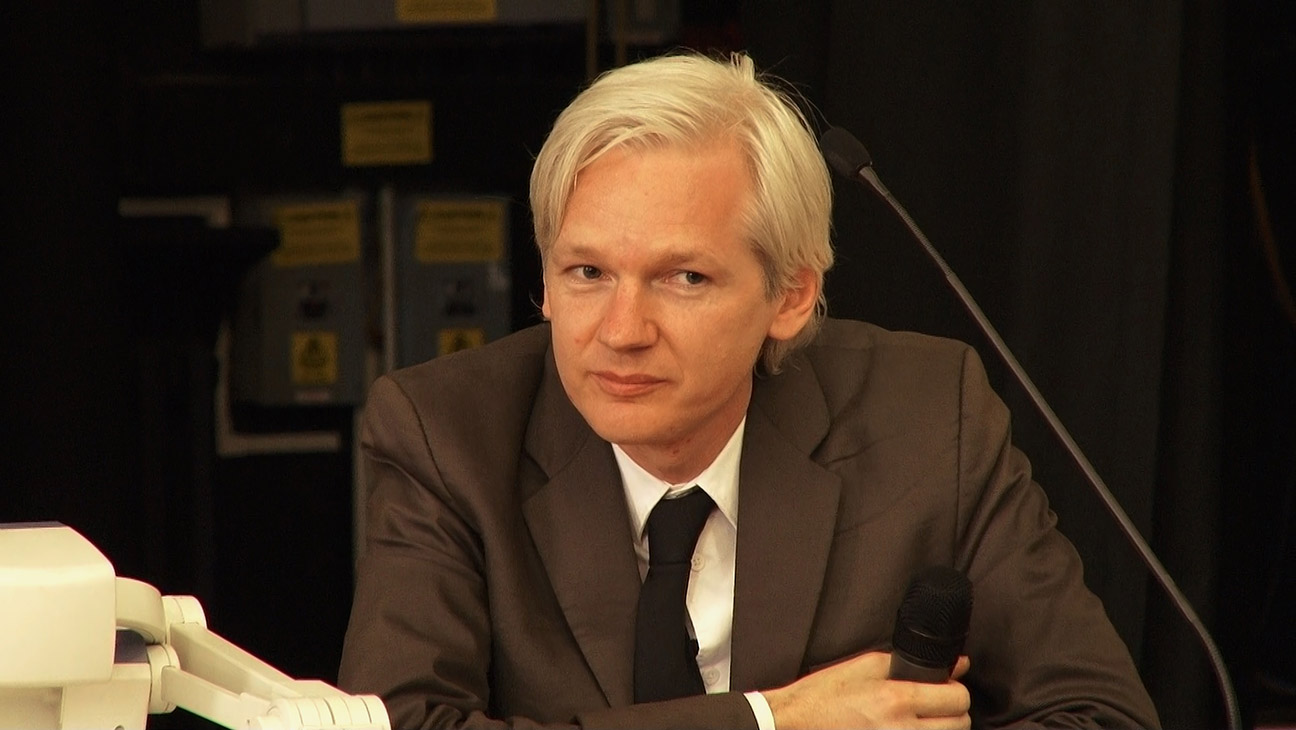Unless you followed the ups and downs — well, mostly the downs — of Julian Assange’s life over the past 15 years, you’ll have to wait until the last half-hour of Eugene Jarecki’s new documentary, The Six Billion Dollar Man, to understand what its title means.
By that point, the WikiLeaks founder had been holed up for over six years at the Ecuadorian embassy in London, where he faced imminent arrest by the UK authorities. It’s then that we learn how the first Trump administration offered, via the IMF, to loan Ecuador’s government $6.5 billion if they agreed to kick Assange out. The move is not exactly shocking, especially coming from a dealmaker like Trump, and it shows just how much the U.S. authorities were willing to pay so they could nab one of their most wanted men.
The Six Billion Dollar Man
The Bottom Line
Conventional but substantive.
Venue: Cannes Film Festival (Special Screenings)
Director: Eugene Jarecki
2 hours 6 minutes
Much of Jarecki’s jam-packed and informative two-hour feature, which premiered as a special screening in Cannes, focuses on the decade-long legal rollercoaster ride that Assange and his team of committed lawyers were obliged to take. The film can get a bit repetitive during all those scenes at the embassy, which is not the most cinematic of locations. But we do grasp the sense of confinement and growing paranoia Assange experienced for years on end. Technically he wasn’t in jail, but his life was under house arrest.
The first half of The Six Billion Dollar Man gives us some of the backstory leading up to that point, showing how Assange rose from unknown Australian hacker to worldwide hero of free journalism to public enemy number one, especially for the American government.
Founded in 2006, his tiny startup WikiLeaks became a phenomenon the next year when Assange released a video called Collateral Murder, unveiling leaked footage of U.S. Marines massacring Iraqi civilians. (Jarecki includes a long excerpt, which is as disturbing now as it was back then.) In the years that followed, the site dumped thousands of redacted documents online, including military field logs, diplomatic communications, and lots of nasty emails between members of the Democratic National Committee.
This was a promising time for the internet, when it seemed like online journalism could shake up the world order. “Would you rather not know?” a bearded Edward Snowden explains (presumably from Moscow), referring to the all the information Assange was offering up free of charge. But that period would be short-lived, especially when the U.S. struck back against the many compromising documents WikiLeaks was putting out in public. “A fight with the Pentagon only ends one way,” is what one interviewee tells Jarecki, and the rest of the movie shows how our government desperately tried to land Assange behind bars, leaving him no option but to take political asylum in the only place he could get it.
Jarecki is no stranger to the abuses of U.S. power, especially in early features like The Trials of Henry Kissinger and Why We Fight that focused on disastrous American foreign policy, from the Vietnam War to the War in Iraq. In the opening sections of his new doc, he does a good job contextualizing the importance of Assange’s work, which aired lots of embarrassing — not to mention criminalizing — dirty laundry under the administrations of both Obama and Trump, neither of whom come off as good guys here.
Enough happened in those early WikiLeaks years to fill an entire series, requiring Jarecki and his team of four editors to condense tons of material until they get to the heart of the matter for them, which is Assange’s ten years of legal hell in England.
Two co-stars appear in the story at that point: The first is Jennifer Robinson, a human rights lawyer and fellow Aussie, who defended Assange when he first received an international arrest warrant in 2010, then stuck with him until the bitter end. The other is Stella Assange, an attorney and advocate for WikiLeaks, who fell in love with its founder while he was under embassy lockdown, giving birth to their first child. For all the dark clouds of that period, the silver lining was that Assange — whose legal woes started with an eventually dropped rape investigation in Sweden — managed to find his soulmate.
Chock-full of talking heads, archive footage, CCTV images, clandestine iPhone shots and catchy music cues that are also a tad obvious (in one scene, M.I.A.’s “Paper Planes” drops as Assange tosses actual paper planes out of a window), the filmmaking in The Six Billion Dollar Man can be far more conventional than the man in question, whose appearance changes drastically as the years of purgatory drag on.
But if there’s more substance than style in Jarecki’s movie, there’s also plenty of truth-telling. And as Naomi Klein says toward the end of the film, in a simple statement that sums up what WikiLeaks represented back when it was created, and still means right now in our age of rampant misinformation: “The truth matters.”











